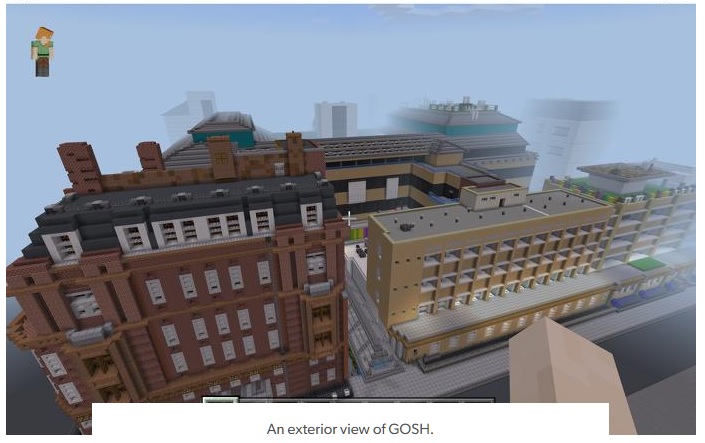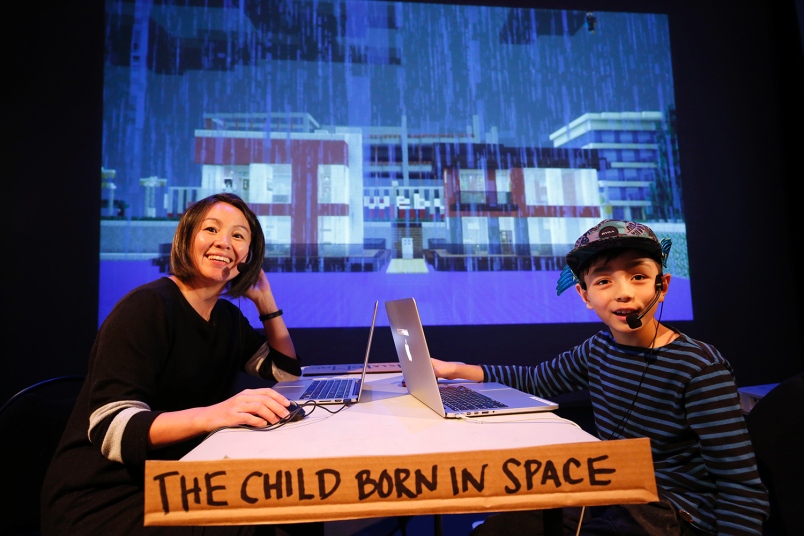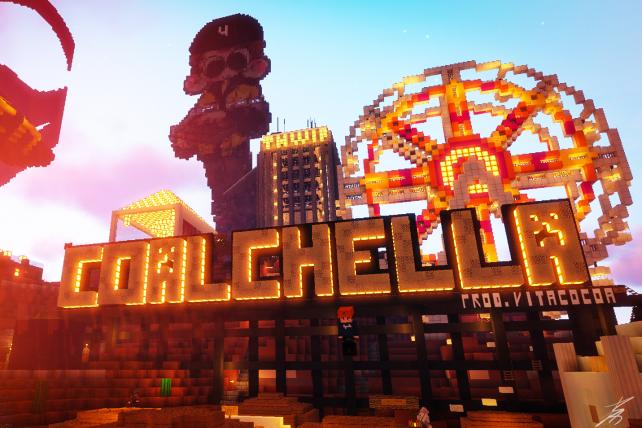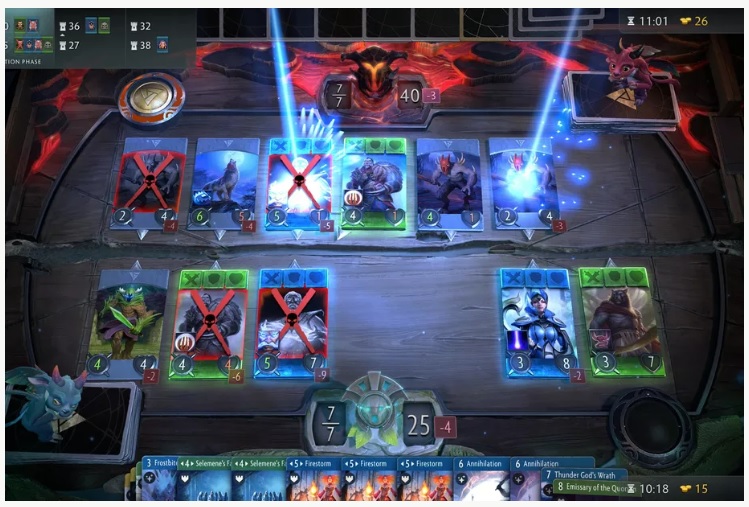
by Stone Marshall | Oct 31, 2018 | Awesome Book News, Free, Intro, Minecraft News, Minecraft questions, news, parent-news, State of Stone, Stone Marshall Book News, Stone Marshall Books, Stone Marshall Club, Stone Marshall Minecraft Adventures, Uncategorized |
When I first walked through the double doors of Great Ormond Street Hospital, it was a little before midnight. The cavernous reception stood before me, with people bustling back and forth. There was a bizarre ambiance: sombre yet fuelled with adrenaline. Parents and guardians shuffled from foot to foot outside, chain-smoking or making calls. My daughter had been rushed in after a car accident and standing within the famous hospital for kids was daunting for me at the age of 24. Even during the day, the hospital can look imposing: a blue-and-white NHS awning sandwiched between monumental architecture, ambulances coming and going, dropping off precious cargo.
My daughter never recovered, but we were there for five days before she died. I watched as kids came and went through inpatient and outpatient wards, being treated for everything from broken bones to life-threatening cancers. Beyond the reception, the wards are decorated with colourful murals to relax the children, and a trip to the roof reveals a wonderful 3D diorama of Pixar’s Finding Nemo for kids to explore between treatments. For a child, the idea of going to hospital for any reason is scary, and companies across the world are doing all they can to help children in this situation.
Teams at GOSH are constantly attempting to break down the fear that can overcome children who will be receiving treatment on-site. After recently introducing an inflatable MRI scanner to help kids adjust to the cramped conditions of the real thing, they’ve gone a step further and built the entire hospital within Minecraft. Now children and parents can tour the hospital virtually, exploring the wards and the different departments they may have to attend. This sounds at first like another story of a vast DIY building project within the Mojang game, but in this case the hospital struck a partnership with Minecraft owner Microsoft to ensure high-quality work and parity with the building.
1
The walkway to the main entrance of Great Ormond Street Hospital, in Minecraft.
“The project took around two months to complete,” says Lee Stott, senior software engineer for Microsoft UK. “As you’d expect, lots of research went into building Great Ormond Street Hospital in Minecraft.” But it wasn’t an easy project to manage. Minecraft blocks are one meter thick, which skews the dimensions of the hospital. “To work around this, each floor is separate and the buttons at the elevators simply teleport the player from the elevator on one floor to another.” Microsoft and a crew from professional Minecraft build team Shapescape were provided with hundreds of images and video clips – and, crucially, they were able to study floor plans which have been constantly updated since before the turn of the 20th century.
“Throughout the project, we worked with Shapescape, a company steeped in heritage amongst Minecraft Content Creators, who have previously recreated places such as Trafalgar Square, Chicago and Florence. We trusted them to build the most realistic experience possible using their team of more than 30 people from 11 different countries,” explains Stott. The project will allow children to explore the hospital on computers and soon also in VR. No section of the hospital is off limits, from Paediatric Intensive Care to the café or the golden chapel. The possibilities this generates are seemingly endless; community staff on-site could set challenges for the kids within the game, or use it as a tool for them to meet others their age in similar situations.
2
The hospital’s main reception.
Academic studies are increasingly showing the benefits that video games and the supporting technology can bring to the healing process. Away from Minecraft, companies are using emerging technology in exciting ways. “Today, hospitals are using games to encourage socialising, create a distraction and even aid in therapy. We’ve seen cases where gaming or virtual reality have enabled patients to focus on those activities while nurses have swapped out bandages covering a severe burn or taken a blood sample,” explains Stott.
In fact, Hermes Pardini Labs in Brazil has been using VR to distract children while being vaccinated. The nurse will fit a VR headset onto the child and follow along with a story on a second monitor, ensuring that their movements and actions mirror those of the magical fairy the child can see. When the time comes to inject the vaccine, the child is being given a ‘powerful shield stone’ which will protect them in life. The study accompanying this form of treatment has seen great success and a decrease in upset children.
Back in the UK, Microsoft is hoping that it will see a similar effect from its work at GOSH, thanks to the accessibility of Minecraft. “Kids at different levels of experience and ability can play together in the same world, and whole families can join each other on adventures or work on collaborative projects,” says Stott.
The possibilities don’t end with recreating Great Ormond Street Hospital, as Naomi Owen, PR for the hospital’s charity, explains: “We see this as a big project and one that can be explored with other hospitals across the world and bring new ways to interact.” Another way Microsoft is helping GOSH is with the Cystic Fibrosis team. Cystic Fibrosis is a progressive, genetic disease that causes persistent lung infections and limits the ability to breathe over time. A defective gene causes mucus to build up within the lungs and other organs, meaning the child has to engage in a ‘clearance exercise’ for 40 minutes per day.
3
An exterior view of GOSH.
Stott talks about how the Microsoft team is helping to alleviate the boredom and mundanity of this daily routine with Minecraft. “In order to help with this aspect of the disease we have been working on a project that we call project Fizzyo, which gamifies the Cystic Fibrosis exercise through custom hardware that turns standard airway clearance devices into a game controller. To further boost participation, we have created a Minecraft mod with custom blocks that allows children to construct their own Fizzyo games inside of Minecraft itself. To do this we’ve introduced two new types of block to Minecraft. The Fizzyo block glows and emits red stone power as the participant carries out their airway clearance exercise.” There is also an ‘exercise tracker block’ which provides an interface to configure and track the exercise’s needs into the game.
“This is all about helping patients and their families at the most challenging time of their lives,” says Owen, “and we hope that this technology leads to more ground-breaking uses to be rolled out across the NHS.”
So how does it feel to walk through this version of Great Ormond Street Hospital? I decided I would walk the route that is burned into my brain from my time there. While many years have passed, and the hospital has evolved, I was able to begin from the entrance, next to the statue of Peter Pan, wander through the brightly lit foyer and ‘ride the elevator’ up to the Seahorse ward. I walked the corridors to PICU, saw the beds lined up under the windows, passed the room where my daughter spent her final moments. And even in the blocky, pixelated view before me, my memories unravelled. I’m not a child who needs treatment, but I am a bereaved parent who finds comfort in those hallways and sees how special this project can be for those who need it.

by Stone Marshall | Oct 31, 2018 | Awesome Book News, Free, Intro, Minecraft News, Minecraft questions, news, parent-news, State of Stone, Stone Marshall Book News, Stone Marshall Books, Stone Marshall Club, Stone Marshall Minecraft Adventures, Uncategorized |
Theatre Replacement is exploring mothers and sons through the lens of Minecraft.
MINE, the theatre company’s new production, is onstage at Shadbolt Centre for the Arts Nov. 17 through 20.
Using the computer construction game Minecraft as a kind of theatre, a group of gamer-performers from ages 10 to 45 enact different narratives live.
In a rocky and mountainous landscape they tell the story of Grendel’s mother’s brutal act of revenge from the Beowulf saga. They travel to a clearing in the woods to reveal the brief but powerful lessons that Bambi’s mother taught him before that horrible day in the meadow. Somewhere in a nearby city, a cyborg assassin travels back from the year 2029 to 1984 to destroy a woman named Sarah Connor and her son John Connor, who hasn’t been born yet but who will one day save the human race from machines.
“As the performance unfolds, personal stories begin to emerge from the landscape and weave themselves into the narrative,” a press release notes. “Grendel becomes a tweenage kid who just wants to stay in his room and play videogames; Bambi’s mother’s instinct to protect her son becomes a metaphor for a failed family trip to the Grand Canyon; the Terminator story evolves to reveal all the misplaced prophecies a mother places on her son – it’s a lot of pressure, and Mom worries way too much.”
The press release notes that the stories mingle and mash up as MINE both interrogates and recognizes the role technology plays in modern parent-child relationships.
MINE is created and performed by Maiko Yamamoto and her son Hokuto MacDuff, with Conor Wylie, Remy Siu and a group of four local gamer-performers aged 10 to 14.
Dramaturgy is by Carmen Aguirre and design by Leah Weinstein.
(The company also notes that MINE is not an official Minecraft product, nor is it affiliated with Mojang.)
Showtimes are 8 p.m. Tickets range from $15 to $36, available through tickets.shadboltcentre.com or 604-205-3000.

by Stone Marshall | Oct 29, 2018 | Awesome Book News, Free, Intro, Minecraft News, Minecraft questions, news, parent-news, State of Stone, Stone Marshall Book News, Stone Marshall Books, Stone Marshall Club, Stone Marshall Minecraft Adventures, Uncategorized |
Think of it as all the fun of an outdoor music festival without the crowds—or the outdoors.
In late September, nearly 3,000 people logged on to their Minecraft accounts and got ready to party. The world-building video game has been often used to create larger than life sculptures, buildings, and artworks, but internet-collective Thwip Gang had bigger ideas.
After hosting a Minecraft-based “Birthday Party” for one of their members back in May, the Thwip Gang got to work organizing a full-scale concert completely within the gaming platform. With no more promotion than a few tweets on the organizers’ personal Twitter pages, Coalchella drew in 27,000 listeners over its 8 hours across various streaming platforms. (“Coalchella” because in Minecraft one mines coal, among other minerals. Just go with it.)
The free festival required nothing more than a Minecraft account to attend and drew some big name headliners like ANAMANAGUCHI and Electric Mantis. The musical lineup came together somewhat serendipitously—in an interview with the blog Melting of Age, one of Coalchella’s creators and Thwip Gang collaborator, Umru Rothenberg said, “It was a very random process of just asking whatever friends came to mind or saying ‘this person would be cool’ and checking if anyone was mutuals with them.”
After entering, festival goers arrived at the stage of their choosing — REDBLOCKS or BEDROCKS — and tuned into a livestream on the broadcast audio website Mixlr. Just like IRL, when the performer’s avatar took the stage, the crowd of block people burst into life and the music started. The digital attendees then started dancing and the in-game chat flooded with commentary about the concert.
As if a full-scale two-stage concert “venue” isn’t enough, the Thwip Gang also scattered brands and logos thoughout the virtual site. An IHOb restaurant, a giant Bass Pro Shops Pyramid, and an overhead IKEA blimp were among those featured. Only there was a catch: None of the brands knew their logos were being used for the event — they were mostly plastered around Minecraft as cultural touchstones.
Ad Age reached out to some of the brands referenced in the festival. Stephanie Peterson, head of communications and merchandise at IHOP said, “We’re thrilled that our fans got in on the fun and took it to a new level, creating an epic virtual IHOb restaurant in Minecraft.” A spokesperson for Bass Pro Shops added, “Virtual worlds are interesting but our primary goal is to inspire everyone to get outside and connect with nature.”
At this stage at least, the advertisements are mostly tongue-in-cheek—but having actual sponsor messages is not completely out of the question—and now they have proof-of-concept.
“What will always be most important to me is…that [brands] are not influencing, openly or otherwise, what I am experiencing in any way,” says co-organizer Robin Boehlen, “We can coexist with brands without them becoming controlling.”
Co-organizer Braden Wolfe adds “preserving that [grassroots] presence is really important to what we’re trying to accomplish; creating a universally accessible music event free of region or monetary restriction.”
None of the artists actually paid (or were paid) to play. “All of our impressions were purely organic and the results are a testament to the importance of putting forward unique, inclusive ideas,” explains Max Schramp, one of the festival’s organizers.
Here’s a sample of some of the buzz surrounding the event:
Rothenberg was thrilled by the response and contributed the success of the event to the Internet’s ability to bring people together, both physically and virtually. “Most of us grew up with the internet as a major part of our lives and personally some of my best friends are people I met on Soundcloud and Twitter. An event like this where so many of us from all over the world could hang out together alongside our favorite artists in a virtual space is a literal dream for this kind of community.”

by Stone Marshall | Oct 29, 2018 | Awesome Book News, Free, Intro, Minecraft News, Minecraft questions, news, parent-news, State of Stone, Stone Marshall Book News, Stone Marshall Books, Stone Marshall Club, Stone Marshall Minecraft Adventures, Uncategorized |
Artifact, the Dota 2 digital card-collecting game, is still on target for its launch date at the end of November, but its planned beta period is going to be shorter.
An invitation-only somewhat public beta had been planned for this month. Users who either got a code or signed up to request access are saying (via PC Gamer) they have gotten emails saying the beta is now on Nov. 19, 2018; Artifact is due to launch in full on Steam on Nov. 28, 2018.
“We have added Artifact to your [Steam] account but we have a bit more work to do before letting everyone in,” said an email in a screenshot posted in the game’s subreddit. “Right now we’re planning for that to happen on November 19.”
Artifact got its first public showing at PAX West in Seattle. Fans have gotten beta keys at events this summer (such as The International tournament) and from Valve community relations representatives over social media.
It is currently in a closed beta right now with much tighter restriction on access. The game will launch on Linux, Mac and Windows PC for $19.99. A version for Android and iOS devices will come sometime later in 2019.



